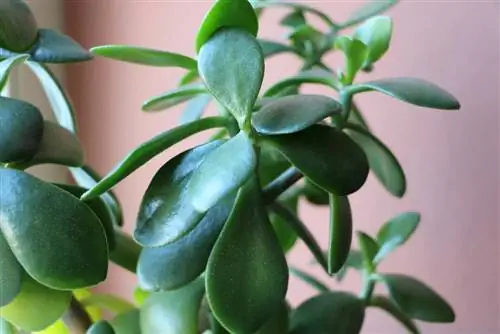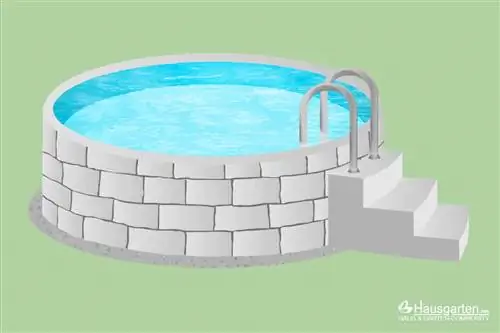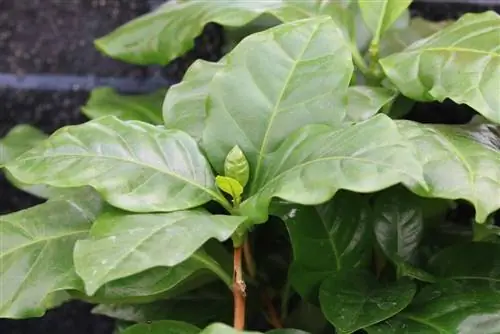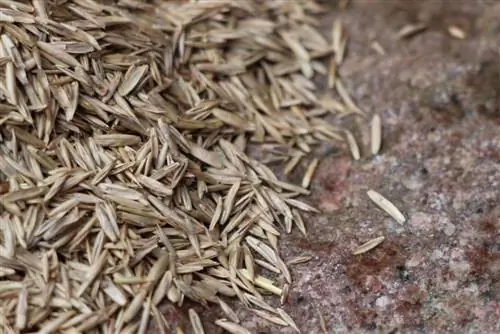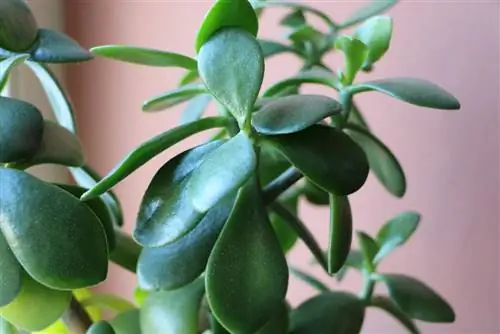- Author admin [email protected].
- Public 2023-12-17 03:39.
- Last modified 2025-01-24 12:45.
The penny or money tree is one of the most widespread ornamental plants. It is no longer possible to determine exactly where his German common names aimed at money come from. It may have something to do with the fact that its leaves are reminiscent of old, misshapen coins. It is said to bring its owner luck and we alth. The money tree is therefore considered a lucky charm. That's why it enjoys such great popularity. It originally comes from East Africa. It is now cultivated as a houseplant all over the world.
Safe succulent plants
Botanically speaking, the money tree belongs to the thick-leaf family. Its Latin name is Crassula ovata. Thick-leaved plants are succulent plants. Water storage takes place in the leaves of the money tree. This means the plant is able to survive a long dry period without any problems. If you cut or break the leaves, a relatively thick juice is released. In contrast to other types of succulents, this one is completely harmless. So it neither causes irritation to the skin nor is it toxic.
On the contrary:
The roots and leaves of the money tree are at least theoretically edible.
Primitive peoples in southern and eastern Africa still use the roots as a type of vegetable today. The leaves, in turn, are used in natural medicine and are said to be good for stomach and intestinal problems when cooked in milk. In short: Crassula ovata is a succulent plant that is completely harmless to people and animals and can be placed in your home without hesitation.
Caution is important
Nobody in our part of the world will put a money tree in their home in order to eat its roots or prepare medicine from its leaves. You should avoid the temptation as much as possible and don't even try it out. Even if the plant is non-toxic, the fertilizer we give it and possible pesticides may not be. While African indigenous peoples have organic money trees at their disposal, it is hard to find untreated plants in our households.
The problem is therefore not the plant itself, but rather its cultivation as a houseplant. Even the smallest amounts of fertilizer or pesticides, which can of course be found in the leaves, are not good for the human or animal organism. Normally there won't be any dramatic consequences if you were to eat the leaves, for example. However, nausea and vomiting are always possible. Especially if you have small children or dogs or cats living in the apartment, a certain degree of caution is necessary. Of course, this applies to the vast majority of houseplants. So what exactly should you pay attention to?
- Always place the money tree so that neither small children nor pets can reach it
- A hanging basket hanging from the ceiling or a shelf attached to the wall at a sufficient height is ideal as a location
- Immediately remove and dispose of fallen or accidentally broken leaves
- After pruning or repotting, dispose of any green waste immediately
Plants can have an almost magical attraction, especially on dogs and cats. Cats are used to eating green food such as grass. This is good for their digestion. However, most green plants in the apartment should be taboo for them.
Tip:
Untreated cat grass can be grown easily and quickly yourself. A container with fresh cat grass usually keeps the cat from attacking the house plants.
Fertilizing is mandatory
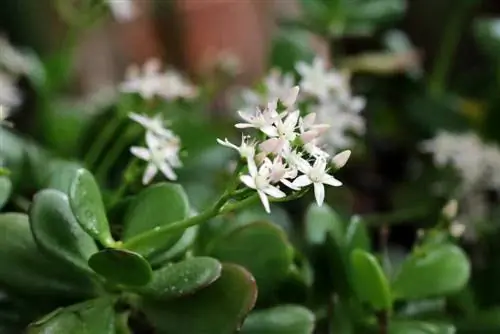
Of course, you could now come up with the idea of simply not fertilizing the money tree or only fertilizing it organically. Then of course there would be no dangers. It's just a shame that wouldn't work. Like any other plant, Crassula ovata obviously needs nutrients to live and grow. In the soil of a planter, these are exhausted fairly quickly. That's why fertilization is necessary. And this is especially true for succulents.
There are special fertilizers for succulents available in stores that are tailored precisely to the needs of this type of plant. Alternatively, you can of course also use classic complete fertilizer if it has a particularly high potash content. The money tree should be fertilized every three to four weeks according to the manufacturer's instructions. Incidentally, more fertilization does not lead to faster or better growth for this plant. That rules out their genetic disposition.
Attention: risk of confusion
As I said, the money tree is completely harmless by nature. However, this does not apply to all thick-leaf plants. You should therefore be very careful to only put Crassula ovata in your home. Some thick-leaf plants that come from South Africa, such as the genus Cotyledon, contain organic acids in their leaves - albeit in very low concentrations. These include, for example, malic acid or isocitric acid, the consumption of which can lead to abdominal pain, nausea, vomiting, nervous restlessness and muscular problems.
However, actual symptoms of poisoning with dramatic consequences are not known. The above symptoms can usually be successfully combated by drinking a lot. Charcoal tablets can also be taken. All in all, these thick-leaf plants are not really dangerous either. They can still cause unpleasant reactions when their leaves are eaten. To avoid this from the outset, the money tree should be purchased from a specialist retailer so that any risk of confusion can be ruled out.
Plant without risk
Even if you always hear something different: the money tree is a risk-free plant. It is not naturally poisonous, but can pose some risk from fertilizers and pesticides - but only if its leaves are eaten. However, Crassula ovata is not intended as a food source, but rather as an ornamental plant. Unintentional consumption by children and front doors can easily be prevented by placing the plant out of their reach. Then the money tree is guaranteed to be a lucky charm.

